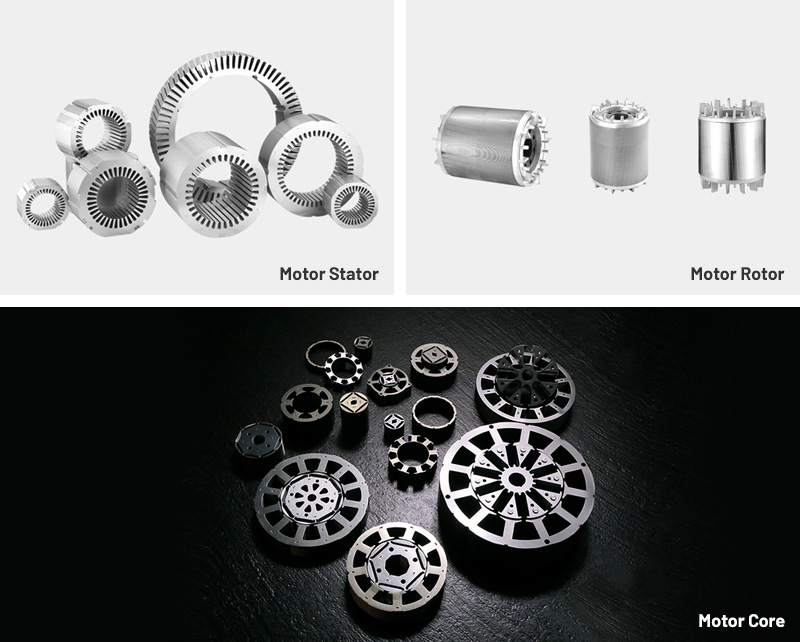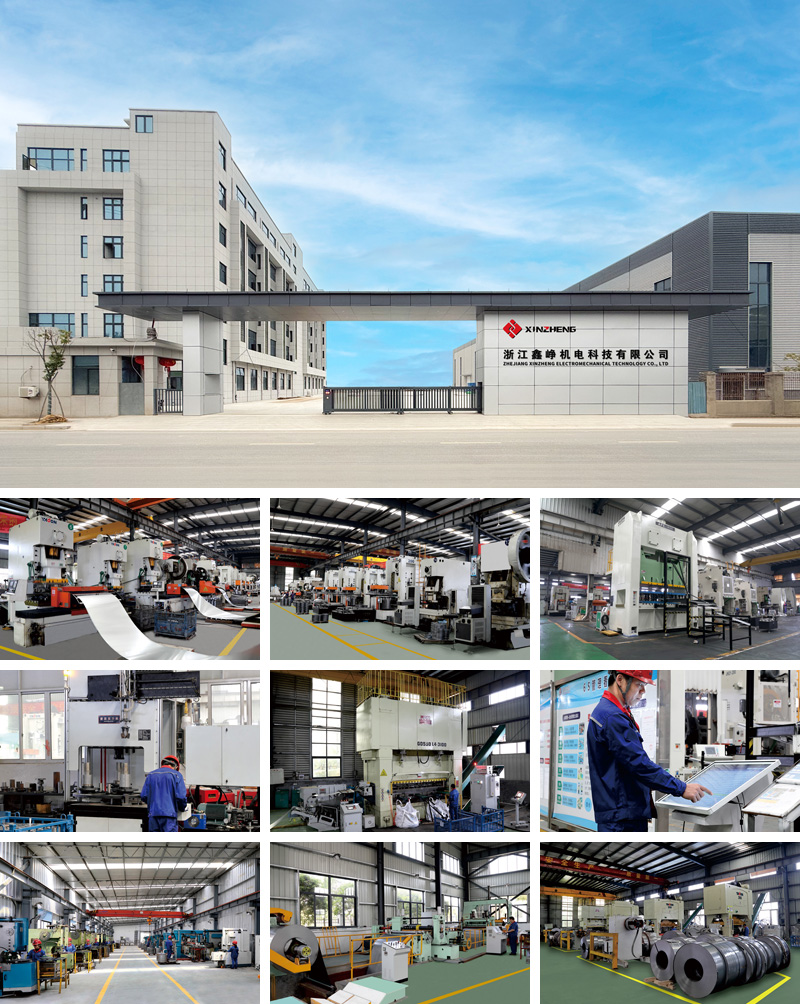The global electric vehicle (EV) market is experiencing unprecedented growth, driven by environmental regulations, technological advancements, and consumer demand for sustainable transportation. As EV adoption rises, manufacturers are under pressure to improve motor efficiency, reduce energy losses, and increase reliability. Traction motors, which convert electrical energy into mechanical motion, are at the core of this transition.
Electric vehicle dedicated motor laminations play a pivotal role in achieving these objectives. By reducing magnetic losses and improving mechanical stability, they enhance motor performance, reduce heat generation, and extend operational lifespan. The market demand for specialized laminations has surged alongside EV production, particularly in passenger vehicles, commercial electric fleets, and hybrid powertrains. According to industry forecasts, the EV motor lamination market is expected to grow steadily over the next decade, reflecting both increased production volumes and the trend toward higher-performance, energy-efficient motors.
Electric motors operate by magnetizing and demagnetizing the rotor and stator cores, producing alternating magnetic fields. This cyclical process generates two main types of energy loss:
Hysteresis loss: Caused by the continuous reorientation of magnetic domains within the core material.
Eddy current loss: Circulating currents induced in conductive materials during magnetic flux changes.
Motor laminations are thin sheets of electrical steel stacked to form rotor and stator cores, reducing eddy currents and improving efficiency. Electric vehicle dedicated laminations are optimized for EV-specific requirements, balancing high rotational speeds, torque loads, and thermal constraints. Key technical considerations include lamination thickness, material composition, insulation quality, and stacking precision.
The use of high-performance electrical steels, often with controlled silicon content and specialized coatings, reduces both hysteresis and eddy current losses. Advanced lamination designs also support compact, high-power-density motors, which are critical for electric vehicles where space and weight are at a premium.
Electric vehicle motor laminations are typically fabricated from cold-rolled electrical steel with tailored magnetic and mechanical properties. Silicon is often added to increase resistivity, thereby reducing eddy currents, while grain-oriented or non-oriented steel enhances magnetic performance depending on the motor design.
Laminations are coated with insulating layers to prevent interlaminar currents and protect against corrosion. Advanced coatings may also improve thermal conductivity, allowing for more efficient heat dissipation in high-power motors. Mechanical strength is equally important; laminations must withstand centrifugal forces at high rotational speeds and mechanical stresses caused by torque fluctuations.
Die Design and Tooling: Precision dies are engineered to produce laminations with exact geometries, including slot profiles, bolt holes, and outer diameters. Tooling must accommodate high-strength electrical steel and maintain tight tolerances during repeated stamping operations.
Stamping: Progressive stamping presses form laminations from steel strips, ensuring uniform thickness and minimal burr formation. The process must balance production efficiency with dimensional precision, as even minor deviations can reduce motor performance.
Annealing and Coating: Laminations are often annealed to relieve stresses from stamping and restore optimal magnetic properties. Insulating coatings are applied for electrical isolation and mechanical protection.
Stacking and Core Assembly: Laminations are stacked to form rotor or stator cores. Accurate stacking ensures concentricity, uniform air gaps, and optimal magnetic flux paths. Bonding or welding may be used to enhance mechanical stability.
The combination of high-quality materials, precise stamping, and controlled post-processing produces laminations capable of meeting the demanding requirements of EV motors.
Several factors influence the performance and reliability of Electric vehicle dedicated motor laminations:
Material Purity and Composition: Impurities or inconsistent silicon content can increase core losses and reduce mechanical strength.
Dimensional Tolerances: Variations in thickness, slot geometry, or hole alignment can lead to uneven magnetic flux, air gaps, or mechanical imbalance.
Insulation Quality: Imperfections in the coating can increase eddy current losses and generate localized heating.
Stacking Accuracy: Misalignment or inconsistent stacking can cause vibration, noise, and mechanical fatigue.
Manufacturing Consistency: Tool wear, stamping speed, and annealing conditions affect uniformity, impacting both magnetic and mechanical properties.
Strict quality control at each stage is essential to ensure consistent performance and long-term reliability in EV motors.
For EV motor manufacturers, choosing the right lamination supplier is crucial. Key considerations include:
Material Certification: Suppliers should provide documentation specifying steel grade, resistivity, magnetic performance, and mechanical strength.
Production Capability: Ability to produce high-precision laminations at scale, with experience handling EV-specific steel grades.
Quality Control Processes: Rigorous inspection for dimensional accuracy, coating uniformity, and magnetic losses.
Post-Processing Services: Some suppliers offer annealing, coating, stacking, or bonding, reducing assembly complexity for the OEM.
Supply Reliability: Stable sourcing and predictable lead times are essential to avoid production delays in large-volume EV manufacturing.
Engaging suppliers with proven expertise ensures the consistent performance of EV motors across production batches.
Despite advancements, the production and application of EV-dedicated laminations face challenges:
High Tooling Costs: Precision dies and progressive stamping equipment require significant upfront investment.
Material Waste: Stamping processes generate scrap, particularly when producing complex lamination shapes.
Design Flexibility: Modifying lamination geometries necessitates retooling, which can increase costs and production lead times.
Mechanical Stress and Burr Formation: Stamping introduces stresses and potential edge irregularities, which can affect magnetic performance.
Thermal Management: EV motors operate at high power densities, requiring laminations that balance magnetic efficiency with heat dissipation.
Addressing these issues involves a combination of advanced manufacturing techniques, careful planning, and supplier collaboration.
Electric vehicle dedicated motor laminations are critical in various EV applications:
Passenger EVs: Traction motors require high efficiency, low vibration, and reliable operation under variable loads. Laminations help achieve compact designs and high torque density.
Commercial Electric Vehicles: Buses, trucks, and delivery vans demand durable laminations that maintain performance over extended operating hours and harsh conditions.
Hybrid Powertrains: Motors in hybrid vehicles benefit from laminations that balance efficiency, mechanical strength, and thermal stability.
Specialty Vehicles: Two-wheelers, off-road vehicles, and industrial EVs require laminations tailored to specific torque, speed, and thermal profiles.
These laminations contribute directly to motor performance, energy efficiency, and service life across diverse EV platforms.
The EV motor lamination industry is evolving rapidly:
Thinner, High-Precision Laminations: Reducing lamination thickness lowers eddy current losses and enables higher power densities.
Automated Stacking and Core Assembly: Robotics enhance stacking accuracy, reduce labor costs, and improve throughput.
Advanced Electrical Steel Grades: New alloys with optimized grain orientation and silicon content reduce losses while maintaining mechanical strength.
Hybrid Manufacturing Techniques: Laser cutting, etching, or wire EDM complement stamping for low-volume or complex lamination designs.
Sustainability Focus: Energy-efficient laminations reduce losses and heat generation, aligning with EV manufacturers’ sustainability and lifecycle cost objectives.
These trends indicate that high-performance, EV-dedicated laminations will continue to play a central role in advancing electric mobility.
Q: Why are EV-dedicated laminations different from standard motor laminations?
A: They are optimized for high-speed, high-torque, and high-power-density applications, with materials, thicknesses, and coatings tailored for electric vehicle motor performance.
Q: How do laminations improve motor efficiency?
A: Laminations reduce eddy current and hysteresis losses, minimize heat generation, and maintain precise magnetic flux paths, improving overall energy efficiency.
Q: What are the main challenges in producing EV-dedicated laminations?
A: Challenges include high tooling costs, dimensional tolerances, insulation integrity, and managing mechanical stresses during high-speed operation.
Q: Can small manufacturers adopt EV-dedicated laminations economically?
A: For small-scale or prototype production, alternative cutting methods like laser or EDM may be used. High-volume production typically relies on precision stamping for cost efficiency.
Electric vehicle dedicated motor laminations are essential for achieving high efficiency, reliability, and durability in modern EV traction motors. Through precise material selection, advanced manufacturing, and stringent quality control, these laminations reduce energy losses, maintain mechanical integrity, and support compact, high-power-density motor designs.
As the EV market continues to expand and performance expectations rise, laminations optimized for electric vehicles will become increasingly critical. Manufacturers who invest in precision engineering, high-quality materials, and reliable supply chains are well-positioned to deliver motors that meet stringent efficiency, durability, and performance standards while supporting the global transition to sustainable transportation.
Product Category

Comprehensive Strength


Copyright © Zhejiang Xinzheng Electromechanical Technology Co., Ltd. All Rights Reserved.
This website uses cookies to ensure you get the best experience on our website.